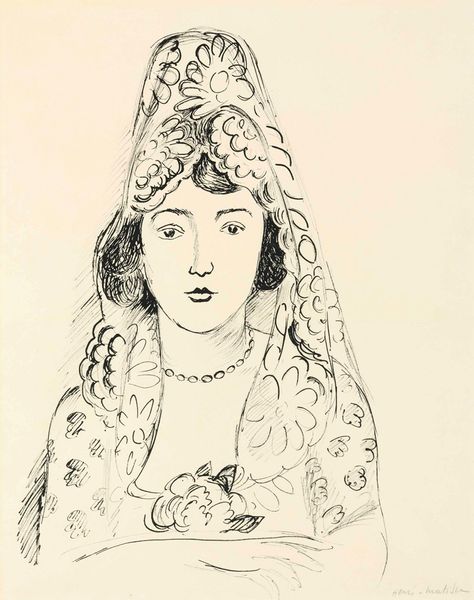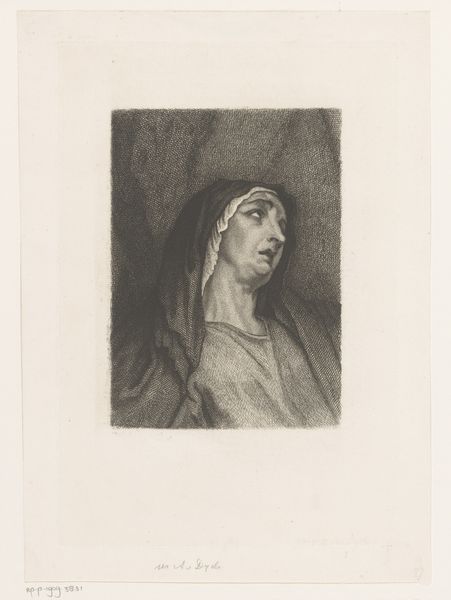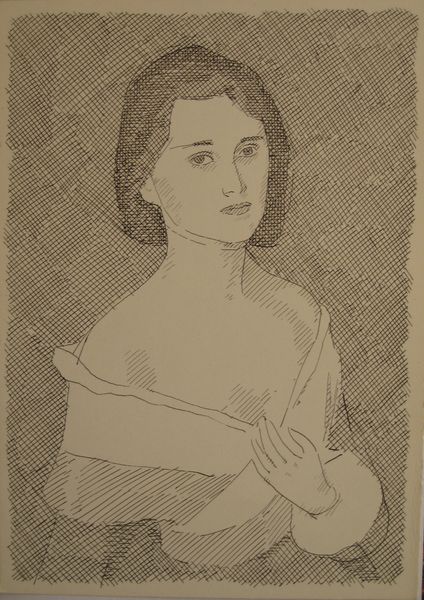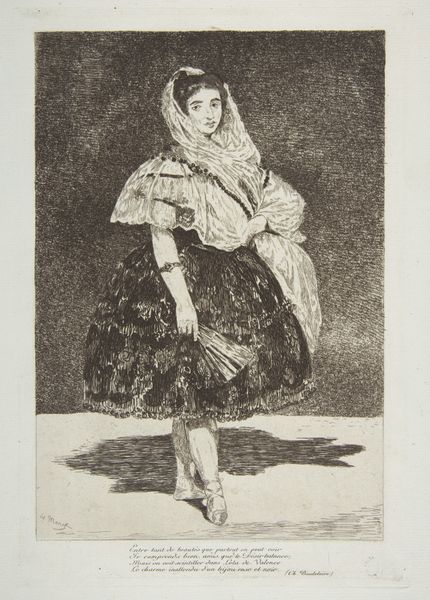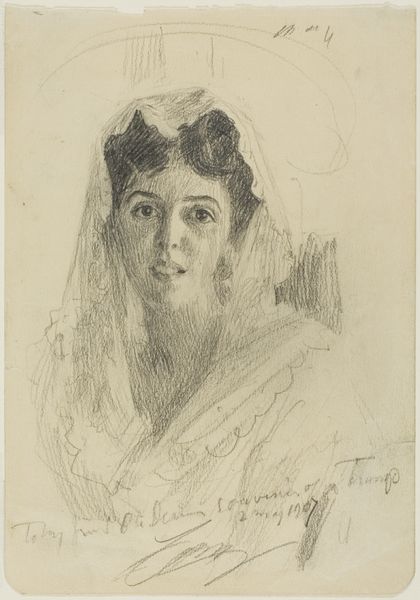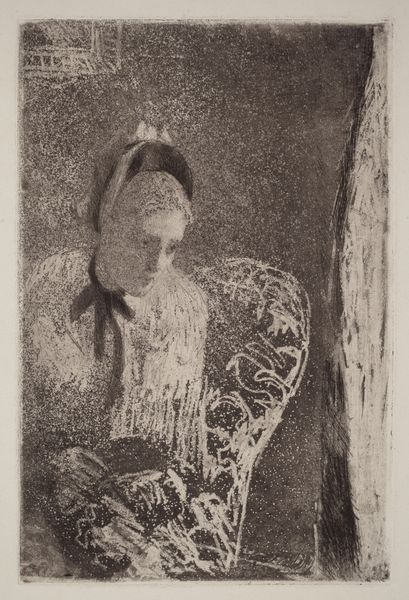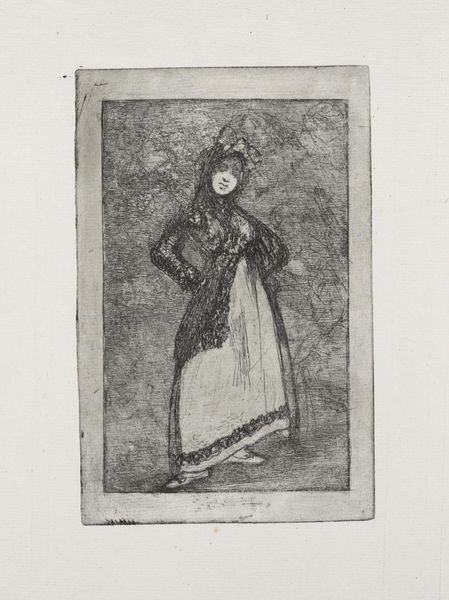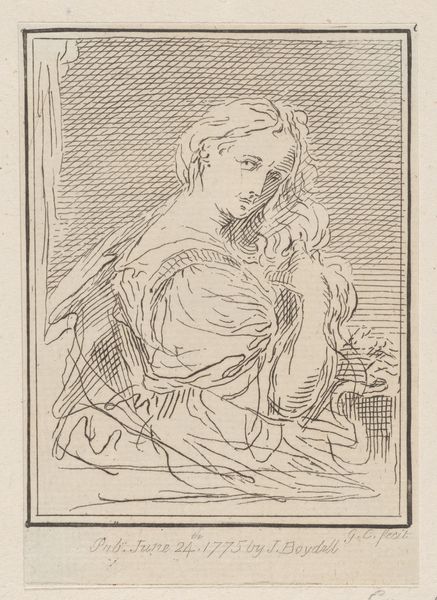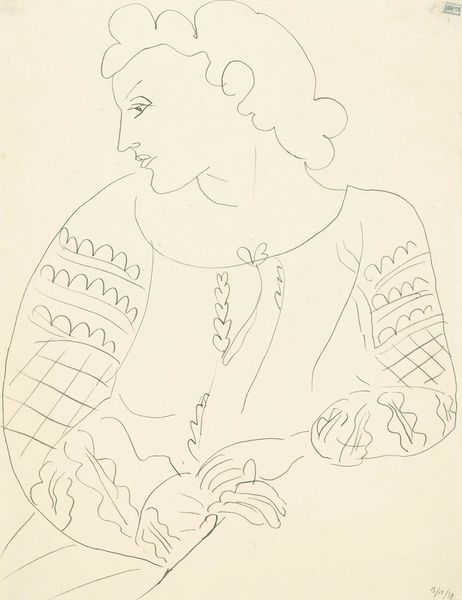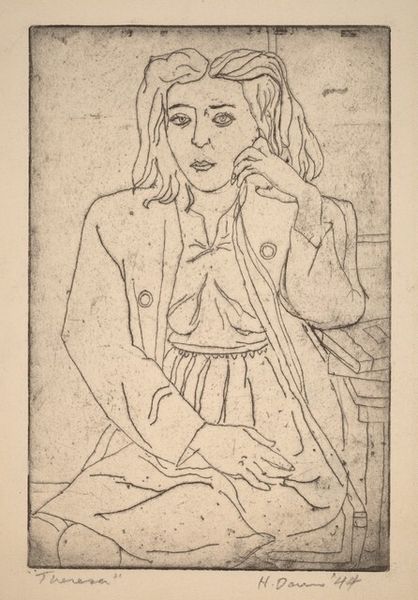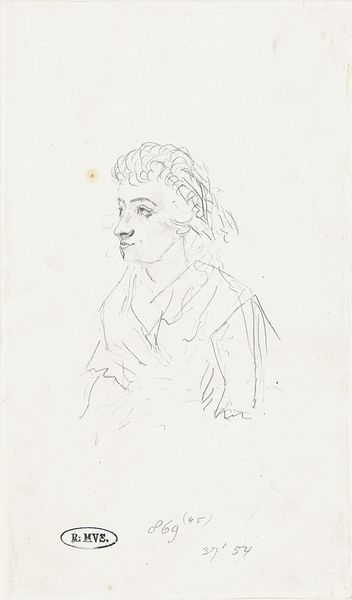
drawing
#
portrait
#
drawing
#
figuration
#
line
#
modernism
Copyright: Modern Artists: Artvee
Curator: Let’s turn our attention to Henri Matisse's "Figure devant tapa africain" from 1929, a drawing showcasing the artist's exploration of portraiture and pattern. Editor: There's a delicacy to the lines, but also something… distant? The figure almost seems to be observing us as much as we are her, yet separated by that almost overwhelming pattern behind her. Curator: That separation speaks to Matisse’s ongoing engagement with representing figures within carefully constructed spaces. Notice how the tapa—the African barkcloth—serves not merely as a backdrop but actively shapes the composition and our understanding of the subject. It's indicative of the period’s fascination with exoticism. Editor: Exoticism, yes, but also think about the materiality itself. Tapa cloth involves significant labor in its creation, from harvesting the bark to the complex processes of beating, decorating, and often, dyeing it. Bringing this kind of material culture into the space of fine art elevates its value while flattening the original labor? Curator: A crucial point. Matisse would have been acutely aware of the dialogue between different artistic traditions. Consider how the stylized rendering of the figure interacts with the repeating geometric design of the tapa. The patterns serve as an entry point into thinking about broader cross-cultural exchange. Editor: Right, but whose exchange? There is her European dress in contrast with the barkcloth suggesting her participation within trade or collecting, a power dynamic expressed even in this "simple" line drawing. The very means of displaying, circulating, and then consuming such images underscores the dynamics of the art market. Curator: Precisely! By placing the figure “in front” of the tapa, as the title suggests, Matisse highlights the constructed nature of the scene and, perhaps, gestures toward those loaded relationships between artist, subject, and cultural object. Editor: Seeing the image again through the lens of production really adds weight to what initially seemed like a light sketch. There’s a complex social and material history embedded within those lines. Curator: It just shows how even the simplest of drawings can open up fascinating avenues for understanding the intersection of art, culture, and power.
Comments
No comments
Be the first to comment and join the conversation on the ultimate creative platform.
